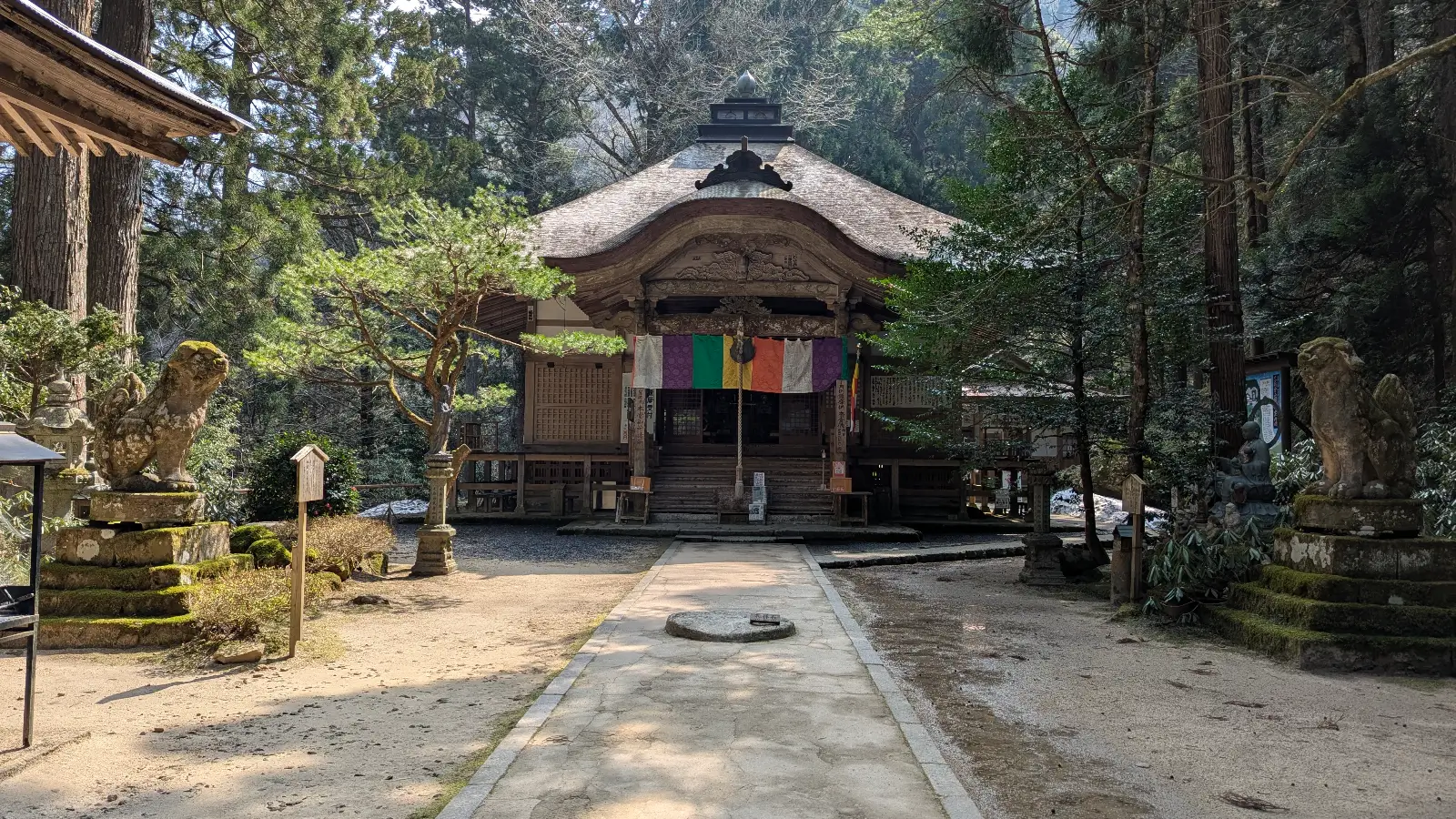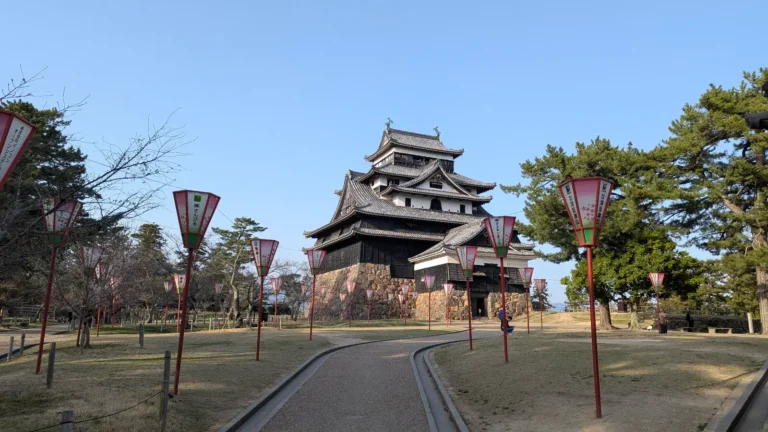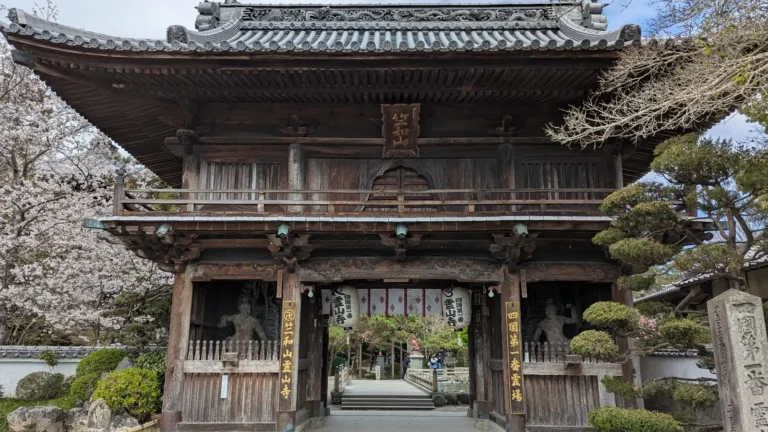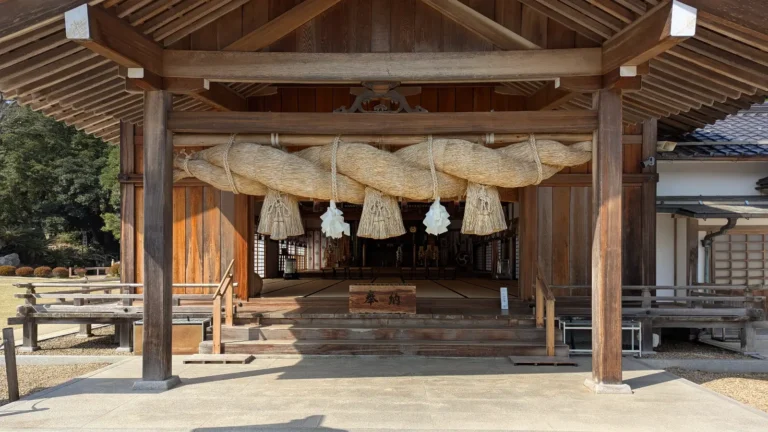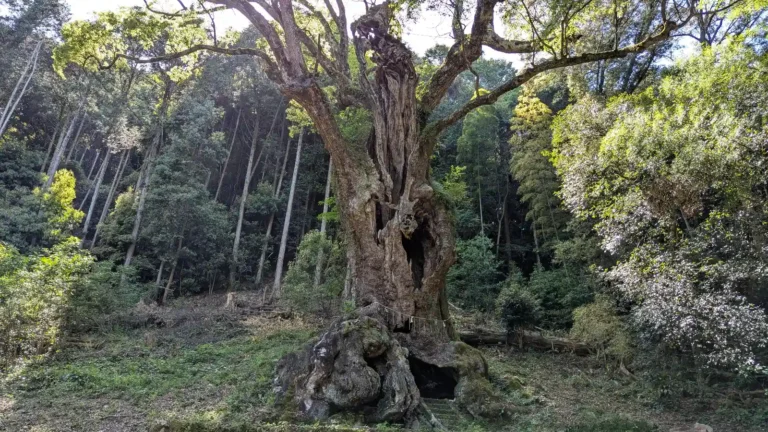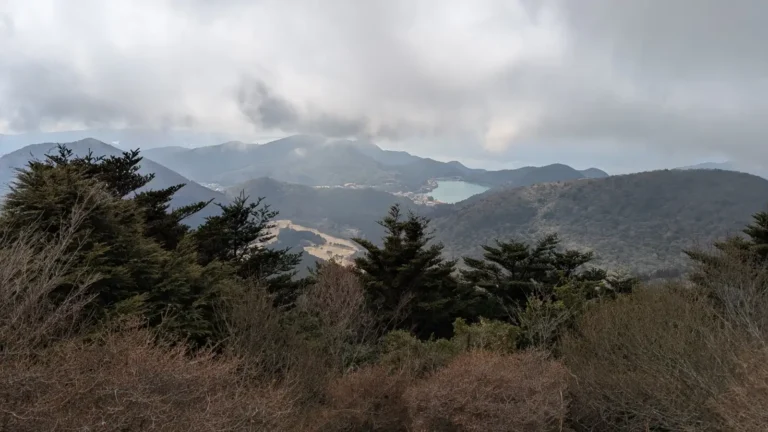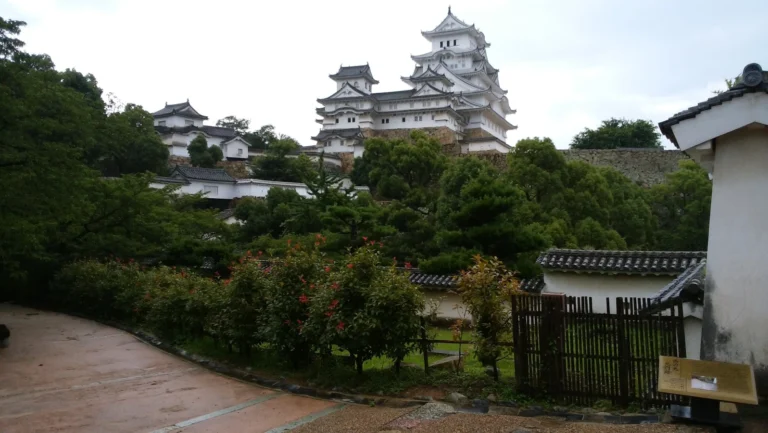Sanbutsu-ji: A JOTM Guide
High on the cliffside, where wind speaks louder than footfall and cedar roots claw the mountainside like memory, a temple clings to stone. You don’t see it at first. You feel it, a shift in the forest, a silence edged with reverence. Then, from the corner of your breath, it appears: Sanbutsu-ji (三仏寺), impossibly perched, immovably still. This is the Nageire-dō cliff temple, a sacred structure seemingly suspended in air, one of Japan’s most dramatic feats of devotion and design. The Mount Mitoku hike that leads to it is no ordinary trail, but a rite of passage etched into root and rock. For those seeking Tottori spiritual travel, few places feel as earned, or as elemental.
Select links in this guide are affiliate links. They help sustain this space… allowing us to share more, with less dependence on advertising.
*Prices are subject to change.
Sanbutsu-ji at a Glance: Temple Overview & Quick Facts
- Region: Chugoku (Tottori Prefecture)
- Nearest City: Misasa Onsen / Kurayoshi
- Type of Site: Tendai Buddhist Temple (Mountain ascetic training site)
- Best Season to Visit:
- Spring (April–May): Trails soften under moss and morning mist.
- Summer (June–August): Lush forested ascent, but humid, start early.
- Autumn (October–November): Vivid foliage frames the path and cliffs.
- Winter (December–February): Snow closes access, but the stillness is unmatched from below.
- Special Notes: Climbing the mountain trail to Nageire-dō requires proper footwear, a registration fee, and a safety check at the base temple gate
Why It’s Special in One Sentence
At Sanbutsu-ji, the sacred isn’t found at the summit, it’s stitched into the breathless climb, the silence between footfalls, and a temple impossibly suspended in air.
Why Sanbutsu-ji Is Worth Discovering: Highlights of Sanbutsu-ji’s Sacred Climb and Cliffside Wonder
- The Nageire-dō Hall, built directly into the rock face of Mount Mitoku, feels more apparition than architecture. It’s said to have been thrown into the cliff by the monk En no Gyōja, hence the name, “Temple Thrown In.”
- Before you glimpse the temple, you must climb. This is not metaphor. The trail is steep, rooted, and raw. Iron chains aid your grip. Prayer is not required, but it often arrives.
- Founded in the Heian period and associated with Shugendō (mountain asceticism), Sanbutsu-ji is both temple and threshold, a place where body and spirit are tested.
- Before the climb, your footwear is checked, what you wear must meet the mountain’s terms. Some choose the temple’s straw waraji sandals, stepping into tradition with every fraying thread.
- There are no signs pushing you forward, only the quiet companionship of earth and effort. The temple rewards not arrival, but attention.
Must-See Wonders at Sanbutsu-ji: Cliffside Hall, Sacred Trail & Ritual Markers
Nageire-dō Hall
- The temple’s most iconic feature, built into the cliff like a secret offering.
- You arrive breathless, not from the view, but the knowing, that it waited through centuries for your footfall.
Mount Mitoku Trail
- A sacred climb of tangled roots, narrow ledges, and steep ascents.
- The mountain is the rite, each stone and rusted chain part of the practice.
Shōrō-dō (Bell Hall)
- A wooden structure just below the peak that tolls silence more than sound.
- Pause here. Let your pulse match the mountain’s still rhythm.
Kannon-dō
- A place to rest and reflect on the bodhisattva of compassion.
- Lantern light softens the wood’s edges; the air shifts from effort to grace.
The Waraji Ritual
- Wearing straw sandals links you to centuries of pilgrims.
- They fray by the time you reach the top, a quiet symbol of your passage.
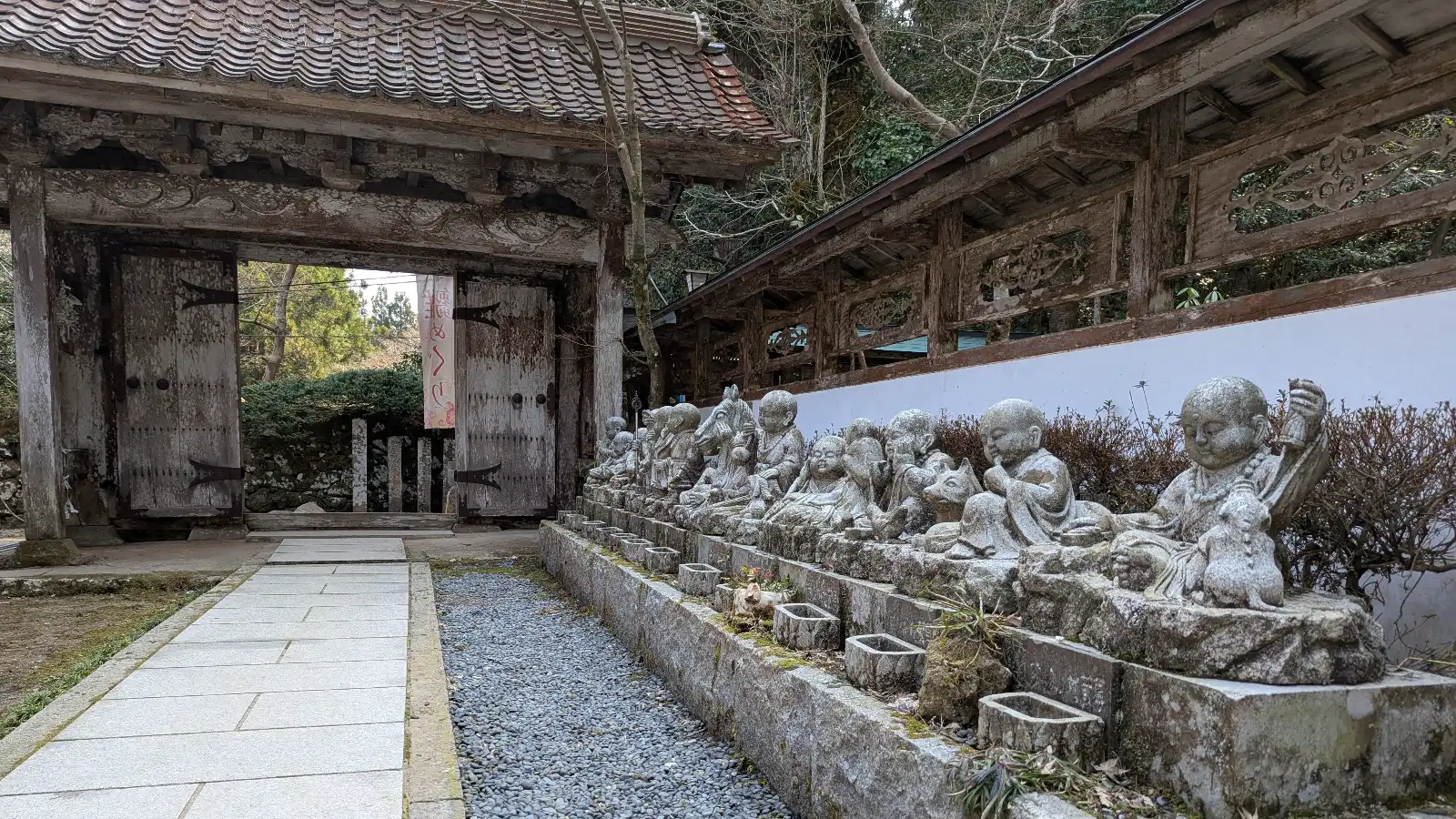
Local Secrets from JOTM: Hidden Tips for Visiting Sanbutsu-ji
- Climb Early to Hear the Forest Breathe: Begin just after sunrise. The morning mist clings to the trail, and the cliffs feel more alive than ever.
- Leave More Than Shoes: The shoe exchange marks the moment you cross into intention. Leave behind hurry, doubt, and noise.
- Go in October for Fiery Silence: The mountain blazes red and gold, but crowds are rare. The quiet deepens under color.
- Pause Where Others Don’t: Look for carved stones along the path, worn smooth by time and touch. These are your unspoken guides.
- Stay After the Descent: Visit the main hall below the mountain. It offers context and warmth, a counterbalance to the climb.
Nearby Sacred Spaces: Temples and Historic Sites Near Sanbutsu-ji You Shouldn’t Miss
- Misasa Onsen – A radium hot spring town with healing waters and a quiet riverside walk (15-minute drive).
- Kurayoshi’s Shirakabe Dozō District – White-walled storehouses and slow canals (25 minutes by car).
Getting to Sanbutsu-ji: How to Access the Temple by Foot, Bus, or Train
- By Train: Take the JR Sanin Line to Kurayoshi Station, then a 35-minute taxi or bus to Misasa Onsen.
- By Bus: From Kurayoshi Station, buses run to Misasa Onsen. From there, it’s a 5-minute taxi to the Sanbutsu-ji base.
- On Foot: From Misasa Onsen, a 45-minute uphill walk leads to the temple entrance and trailhead.
- Hours: 8:00 AM – 5:00 PM (last climb begins at 3:00 PM). Closed during heavy rain or winter snow.
- Cost: ¥800 for entry + trail access (includes waraji rental). Climb requires registration at the temple office.
For travelers using the Japan Rail Pass, portions of this route may be covered, our guide offers practical insights on when it’s worth considering.
Resting Nearby: Hotels near Sanbutsu-ji
- Kansuitei Kozeniya – A serene ryokan tucked beside a murmuring stream, blending warmth and understated elegance.
- Ryokan Marumo – Family-run with simple comforts and heartfelt hospitality.
- Mansuirou – Refined and storied, with grand baths and a deep sense of time woven into every corridor.
- Ooedo Onsen Monogatari Premium Saiki Bekkan – Spacious rooms, open-air onsen, and classic ryokan touches reimagined for modern comfort.
- Fam – Contemporary lodging with clean lines and creative details, walking distance from Misasa’s gentle river path.
If you’re planning a broader journey through Japan, our foundational guides offer clarity for every step of the way. Explore Planning a Trip to Japan: A JOTM Guide, learn How to Get Around Japan, and find the Best Time to Visit Japan for a season that resonates with your rhythm.
FAQs and Travel Tips about Sanbutsu-ji: A Few Last Things Before You Go
Planning a visit to Sanbutsu-ji? Whether you’re drawn by the cliffside mystery of Nageire-dō, the challenge of the Mount Mitoku hike, or a deeper Tottori spiritual travel experience, these FAQs will guide your steps.
A: October offers the most striking foliage and stillness, while April to May brings fresh moss and cooler air along the Mount Mitoku hike.
A: Plan for at least 2–3 hours. The Mount Mitoku hike is demanding, and the Nageire-dō cliff temple deserves time to absorb its quiet intensity.
A: Sanbutsu-ji is located above Misasa Onsen in Tottori Prefecture, about 35 minutes by car or bus from Kurayoshi Station on the JR Sanin Line.
A: The Mount Mitoku hike to Sanbutsu-ji is steep, slippery, and requires both hands and feet. Good balance and fitness are essential to reach Nageire-dō safely.
A: Yes, you can wear your own shoes to climb Mount Mitoku to Sanbutsu-ji, but they must be inspected and approved by temple staff. If they lack grip or risk damaging the trail, you’ll be asked to change, traditional straw waraji sandals are offered as both a practical and symbolic alternative.
A: Winter visits are limited. The Mount Mitoku trail is often closed due to snow and safety concerns, always check local advisories in advance.
A: Children under 10 and those with mobility or balance issues may not be allowed to climb Mount Mitoku to Sanbutsu-ji. Temple staff assess each visitor’s readiness at check-in.
A: Photography is allowed from designated viewpoints, but not while climbing or within sacred areas near Nageire-dō. Always follow posted signs and staff guidance.
A: Wear comfortable clothing, bring gloves for steep sections, and avoid large bags. All belongings must be secured before climbing Mount Mitoku.
A: No reservation is needed, but you must register at the temple office before starting the hike. Hours and access vary by season and weather.
A: Basic restrooms are available at the Sanbutsu-ji base, but none exist along the Mount Mitoku trail. Use them before beginning your climb.
A: Legend says En no Gyōja, founder of Shugendō, hurled the Nageire-dō into the cliff with spiritual power, earning its name, “Temple Thrown In.”
A: The straw waraji sandals provided for the Mount Mitoku hike serve a dual purpose: they protect the sacred trail from modern shoe wear, and they connect climbers to centuries of pilgrims who undertook the ascetic journey in similar traditional footwear. Wearing them is a symbolic act of humility and an embrace of the mountain’s spiritual challenge.

